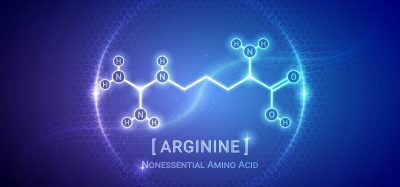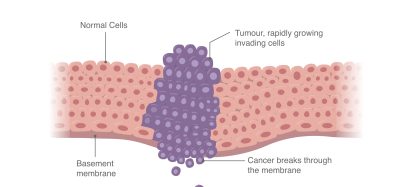Fast, scalable free energy prediction with nonequilibrium switching
Posted: 24 November 2025 | Dr Agnes Huang (Lead Application Scientist - Cadence Molecular Sciences (OpenEye)), Dr Paul Hawkins (Scientific Product Evangelist Architect - Cadence Molecular Sciences (OpenEye)) | No comments yet
Nonequilibrium switching (NES) offers a faster, more scalable way to predict how strongly drugs bind to their targets. By replacing slow equilibrium simulations with rapid, parallel transitions, NES delivers accurate free energy predictions at speed.


In the race to discover new medicines, one of the most critical questions scientists must answer is: how well does a potential drug bind to its target?
The predicted strength of the interaction between a potential drug and its target contributes significantly to the potency of the drug and is known as binding free energy (ΔG). Accurate prediction of ΔG guides drug designers towards compounds more likely to succeed experimentally and away from those less likely to succeed critical information when experiments are often costly and time-consuming.
Unfortunately, calculating ΔG accurately is far from trivial; ideally, a scientist would calculate the ΔG directly (the absolute binding free energy, or ABFE) for all compounds of interest, but this is very computationally expensive and often yields unacceptably inaccurate results with current state of the art. Instead, calculating the difference in ΔG between two similar molecules, known as relative binding free energy (RBFE), is significantly cheaper to calculate computationally and has been shown to provide useful guidance in compound selection. RBFE computationally transforms one molecule into another using an approach known as alchemical transformation. From an alchemical transformation the free energy differences between one ligand and another can be calculated. This article compares several different approaches to RBFE calculation.
Automation now plays a central role in discovery. From self-driving laboratories to real-time bioprocessing
This report explores how data-driven systems improve reproducibility, speed decisions and make scale achievable across research and development.
Inside the report:
- Advance discovery through miniaturised, high-throughput and animal-free systems
- Integrate AI, robotics and analytics to speed decision-making
- Streamline cell therapy and bioprocess QC for scale and compliance
- And more!
This report unlocks perspectives that show how automation is changing the scale and quality of discovery. The result is faster insight, stronger data and better science – access your free copy today
The basics of binding free energy
Currently, popular methods such as free energy perturbation (FEP) and thermodynamic integration (TI) simulate the alchemical transformation of one compound into another using a series of intermediate steps. To do this, each intermediate step must reach thermodynamic equilibrium, which can take hours on powerful hardware. Therefore, achieving appropriate accuracy can be both slow and expensive, limiting the scale of RBFE calculations executed with these methods.
NES uses many short, bidirectional transformations that directly connect the two molecules being simulated, where the transformations are not at equilibrium.
An alternative approach – nonequilibrium switching (NES) – offers a fresh perspective. Rather than simulating a gradual equilibrium pathway from one molecule to another, NES uses many short, bidirectional transformations that directly connect the two molecules being simulated, where the transformations are not at equilibrium. The mathematics behind NES ensures that even though each switch is driven far from equilibrium, the collective statistics still yield an accurate free energy difference calculation. Consequently, RBFE calculations can achieve 5-10X higher throughput than other methods.
Since each switching process is independent, they can be run concurrently, offering a scalable, massively parallel and fault-tolerant method – an ideal fit for the realities of modern computational infrastructure.
NES increases efficiency and robustness in drug discovery
For project teams under time pressure, the NES approach translates directly into real-world efficiency. A typical RBFE workflow requires multiple intermediate states, each demanding hours of simulation. NES eliminates this chain of dependent states by focusing on many fast, independent transitions, resulting in a substantial increase in speed.
- Sampling efficiency: nonequilibrium simulations can navigate complex free-energy landscapes without the need for specialised algorithms.
- High throughput: within the same compute budget, NES can evaluate more compounds or repeat simulations to improve statistical confidence. This widens the discovery funnel, allowing teams to explore broader chemical diversity and make more confident decisions when experimental resources are scarce.
- Fast feedback: nonequilibrium switching processes are fast – often tens to hundreds of picoseconds – so partial results arrive quickly. This enables adaptive workflows that reallocate computing power to the most promising compounds on the fly.
- Scalability and resilience: the highly parallel, independent nature of NES maps well to cloud computing frameworks; large numbers of calculations can be run in a burst, then the hardware can be shut down or turned to another task. Even if some runs fail or lag, the overall statistics remain valid, offering resilience that other methods lack.
In drug discovery, where thousands of compounds compete for attention, the ability to screen 5–10 time more candidates with comparable accuracy can shift the odds of identifying a promising molecule early in a programme – saving months and potentially millions of dollars downstream.
Conclusion
Nonequilibrium switching represents a shift in the calculation of relative binding free energy. By replacing the traditional chain of equilibrium simulations with swarms of independent, fast transitions, NES unlocks unprecedented scalability and efficiency. Its grounding in statistical physics ensures that speed doesn’t come at the expense of rigour.
As the pharmaceutical industry continues to embrace cloud computing, AI-driven design and automation, methods like NES can be key enablers – providing reliable free energy predictions at the scale these new workflows demand. It offers not just more scalable answers, but a different way of thinking: one where computational methods align naturally with modern distributed computing.
NES signals a turning point for RBFE calculations, providing the speed and scale required for today’s data-driven discovery engines.
About the authors
Agnes Huang, PhD, Lead Application Scientist, Cadence Molecular Sciences (OpenEye)


Paul Hawkins, PhD, Scientific Product Evangelist Architect, Cadence Molecular Sciences (OpenEye)


Over his career in experimental and computational chemistry Paul has published highly cited papers on a variety of topics, including conformer generation, shape-based methods in virtual screening and the application of statistical approaches to method validation. He is also a named inventor on several patents in drug discovery.
Related topics
Computational techniques, Drug Discovery, Drug Discovery Processes, High-Throughput Screening (HTS), Informatics, Machine learning, Molecular Modelling, Screening, Structural Biology, Target Molecule, Targets
Related organisations
Cadence Molecular Sciences (OpenEye)








